Ever wonder how the humble tinkering of garage hobbyists sparked a revolution that reshaped our world? From blinking LEDs to sleek laptops, the journey of personal computing is packed with bold ideas, epic DIY feats, and a dash of serendipity.
In January 2025, we passed the 50th anniversary of the introduction of the first commercially available personal computer, the Altair 8800. It was not necessarily the first personal computer, but it was the first to sell in volume (thousands) and was a commercial success.
The early personal computer was a device used by the people who built them. Many were sold as kits. The kit builder understood the device’s workings at the component level—fixing, tinkering, and modding (especially modding) were just part of the whole scene. As one computing pioneer, Steve Wozniak (maybe you’ve heard of him?) mused, “At one time, the personal computer symbolized the independent thinker who wasn’t afraid to try something new.”
The device that opened the door to this revolution was the Intel 8080 microprocessor. This unit was introduced in April 1974 (51 years ago!). This chip made the personal computer practical.
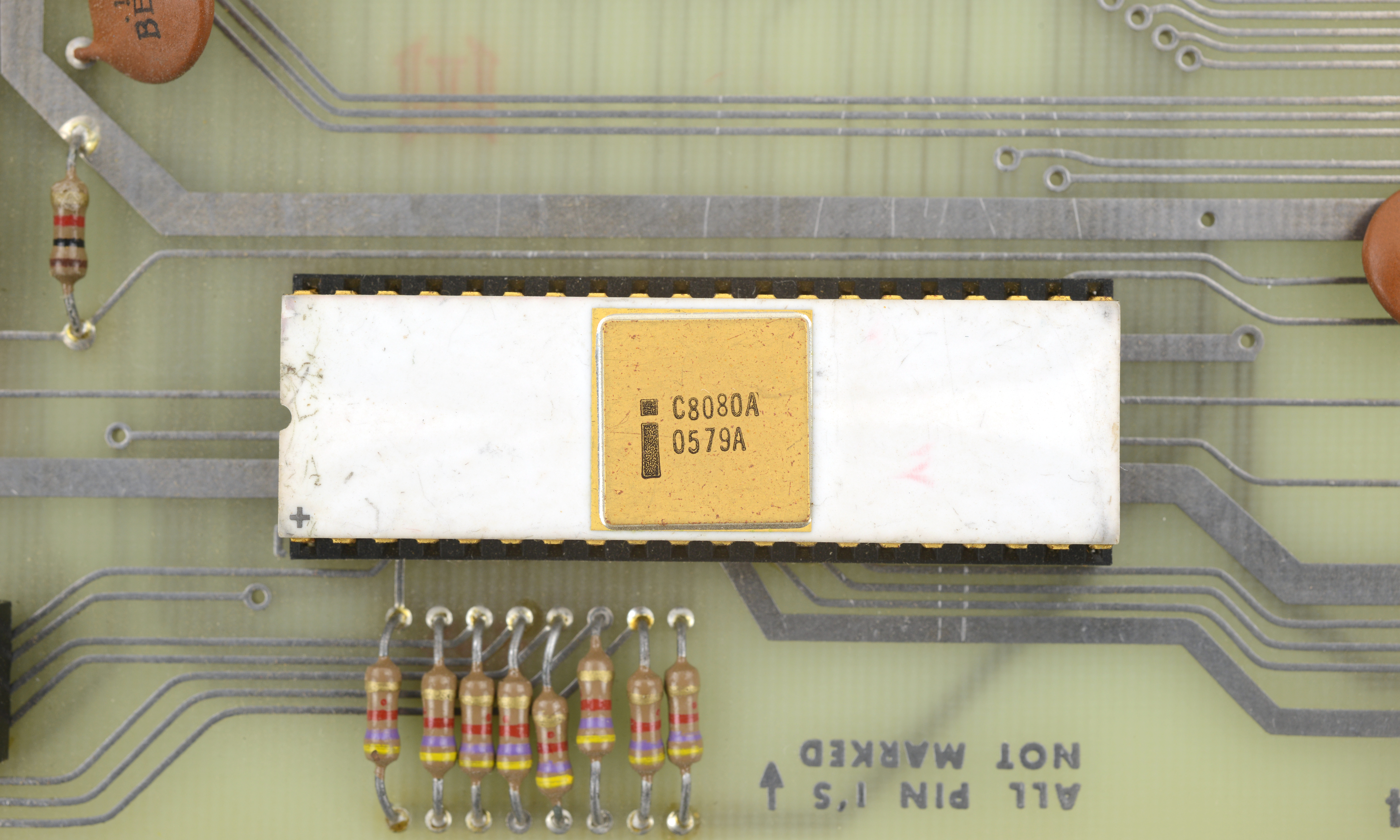
The speed of development in the world of computation was staggering. The world of electronic computers shifted over the first decade of the microcomputer from a tool of big business, industry, and scientific endeavor to something akin to an appliance.
When we examine the technology of the day in depth, it seems primitive, but it marked a breakthrough point for the society we live in today. Tracing this development is a fascinating exercise. Here’s an annotated timeline of the first decade:
1974: The Intel 8080 Arrives
- In April 1974, Intel unveiled the 8080 microprocessor, a marvel that slashed supporting‑chip requirements from more than 20 (in its 8008 predecessor) down to just six or eight.
- This “sweet spot” of integration turned personal computing from a pipe dream into a doable DIY reality.
Tech Deep‑Dive:
The 8080’s 2 MHz clock and 16‑bit address bus let you access up to 64 KB of memory—astronomical compared to the 256 bytes that came on the Altair’s original boards. Growth was in the works. The 8080A shown in the picture fixed a flaw in the original 8080.
1975: The Altair 8800 & Cassette Storage
- January: Micro Instrumentation and Telemetry Systems (MITS) shipped the Altair 8800 in kit form for $439 ($2,708 value in 2025). It had a meager 256 bytes of RAM (that’s 0.000256 MB!) as the stock memory. However, it was a commercial success from the start and was rapidly backordered. Amazingly, it had no display and was programmed using switches on the front panel, with LEDs to indicate operation.
- Fun Fact: To hit their chip budget, MITS bought “cosmetically blemished” Intel 8080s at a steep discount (over $300 at full price)—proof that scrappy engineering and shrewd deals go hand in hand.
- Tapes! Punched paper tape was the initial means of easily transporting and loading software. Cassette tapes emerged as a new form of mass storage and an easier way to load programs. A simple copy of BASIC (a high-level programming language) took 5 minutes to load if you had enough memory!
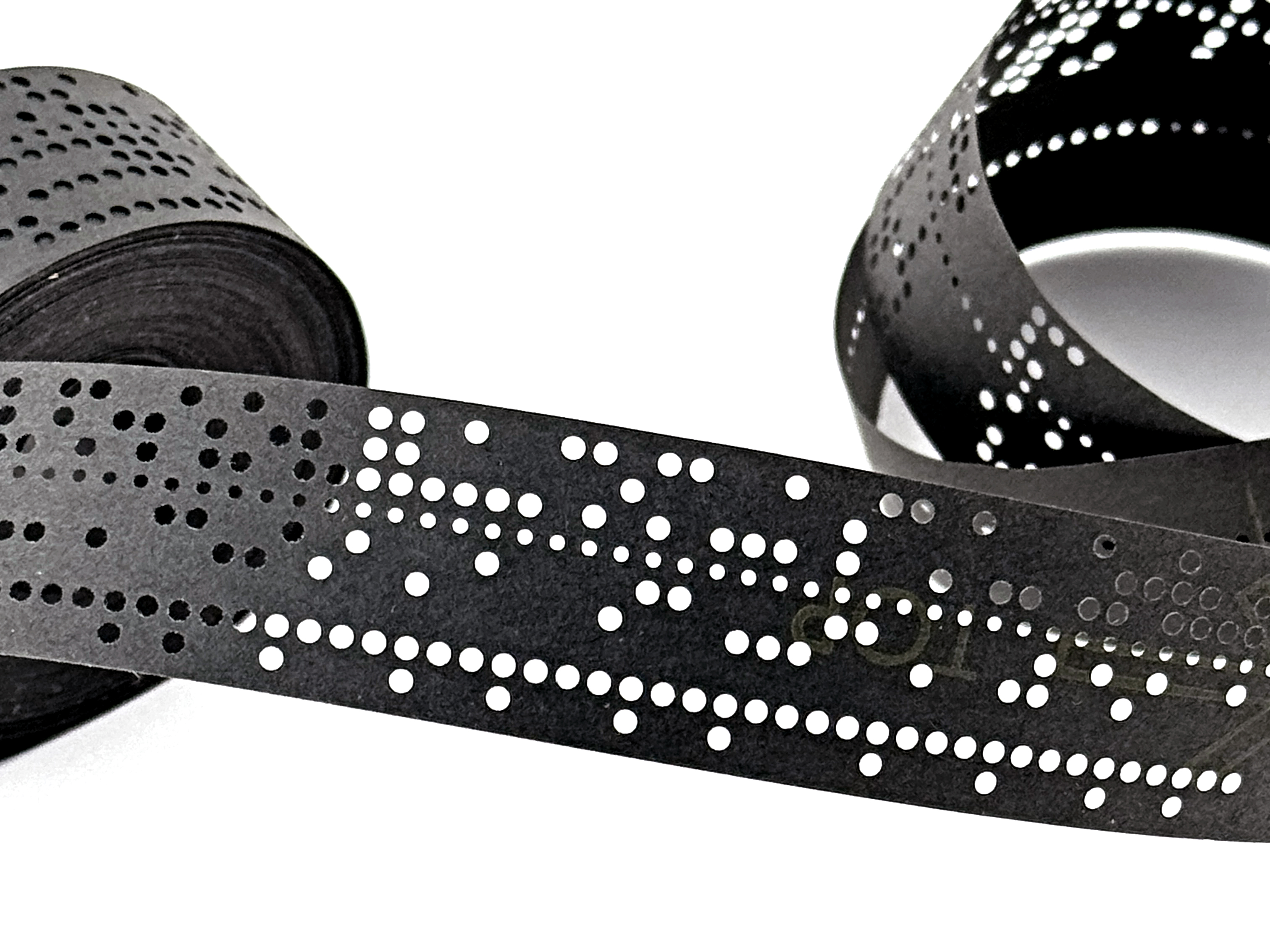
- Join the Club! The Homebrew Computer Club was formed in Menlo Park, CA. Steve Wozniak and Steve Jobs were early members, as were many of the pioneers of the personal computer world. Some of the earliest allegations of software piracy were leveled by Bill Gates in their club newsletter. Those who shared software were thieves! (Even if it was in the form of punched paper tape.)
- Fun Fact: the RF interference produced by an Altair 8800 executing a program amazed Bill Gates in 1975 when he heard music play through an AM radio placed near the computer at a Home Brew Computer Club Meeting.
1976: Clone Computers & New CPUs
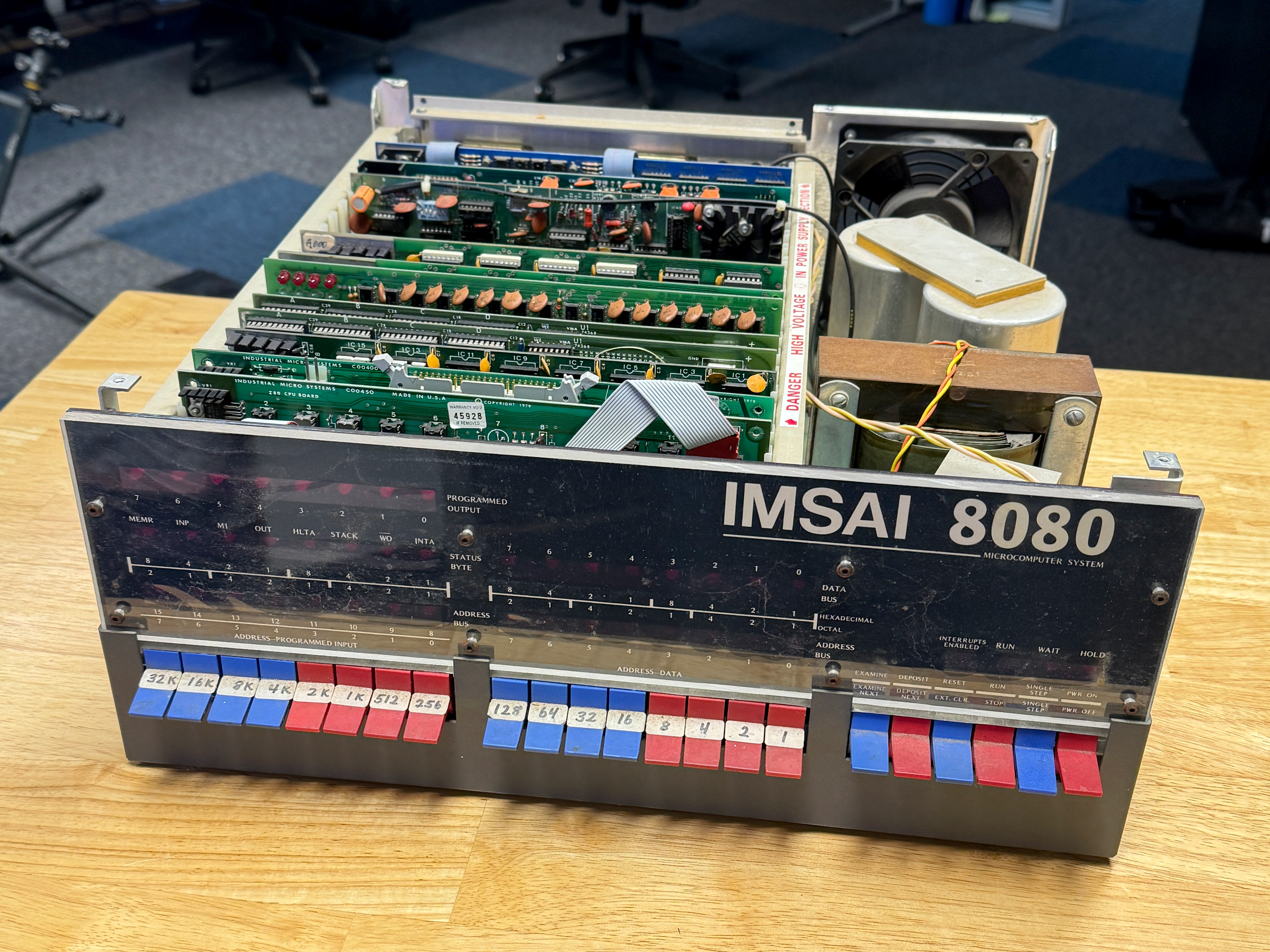
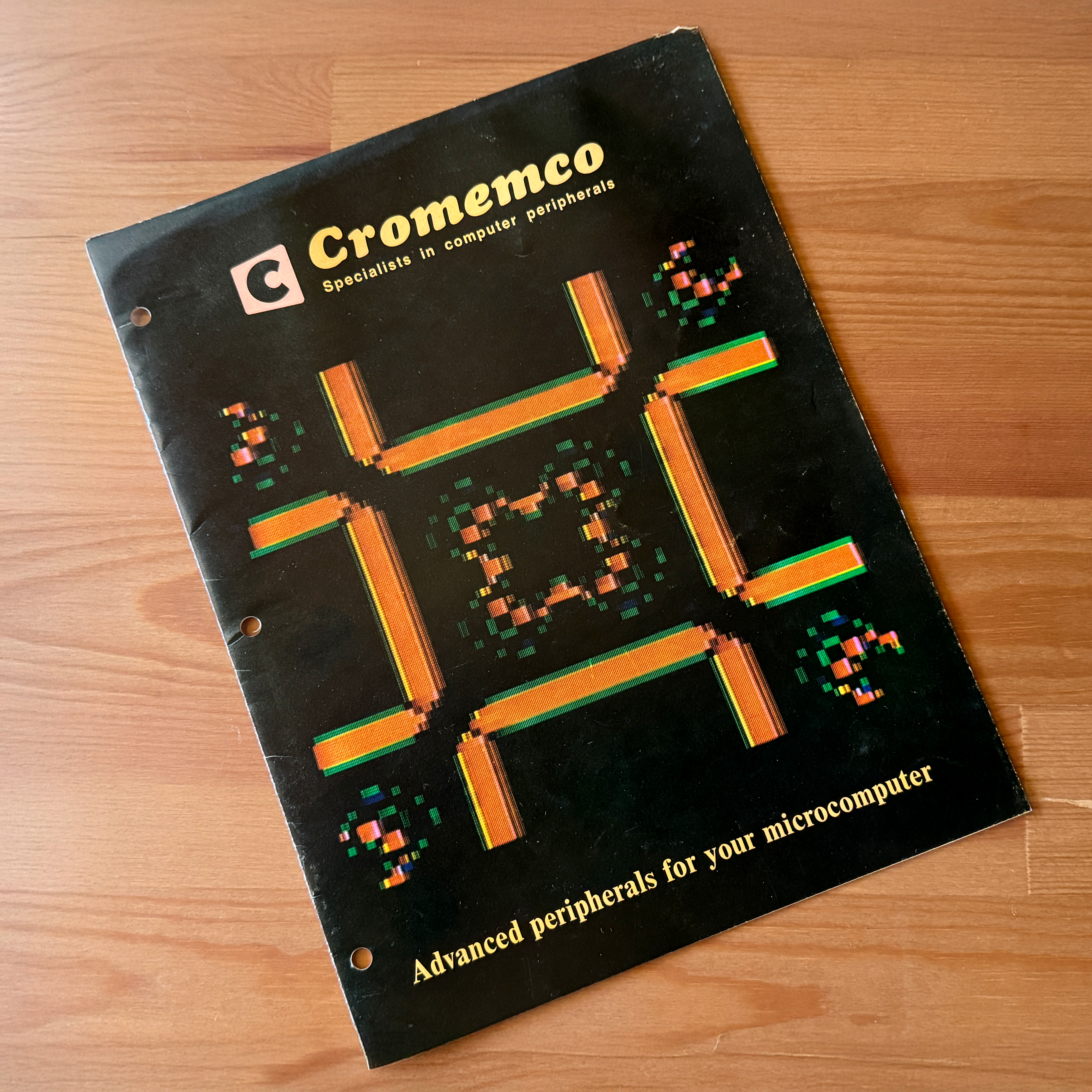
- IMSAI 8080: The IMSAI 8080 arrived on the market. It was a much more capable and rugged machine than the 8800 and is sometimes called the first clone computer. It surpassed the Altair 8800 with a larger power supply and greater expansion capability.
- Fun Fact: Altair 8800s were very backordered, and a company named Information Management Sciences (IMS) had an urgent project they needed to complete. They borrowed an Altair and then copied and improved the borrowed unit, keeping its system “bus” (internal connections) arrangement. The IMSAI 8080 was born.
- Get on the Bus: This “bus” was initially known as the Altair Bus, and then the S-100 Bus. This was the first system architecture to become a standard later (IEEE 696-1983), and it set the direction for open architecture. Cromemco was among the first computer peripheral companies and the S-100 bus opened the door.
- Fun Fact: The S-100 bus is named for the fact that the connector to attach circuit boards to the bus had 100 connections. Many of these connectors were military surplus, and thus inexpensive.
- The Zilog Z-80 microprocessor and the MOS 6502 microprocessor (the first one that Apple used) also appear. Their low cost, under $30, pushed down the cost of processors in general, opening the door for the personal computer industry’s development. These were even less expensive and more capable than the blemished Intel 8080 processors used in the Altair.
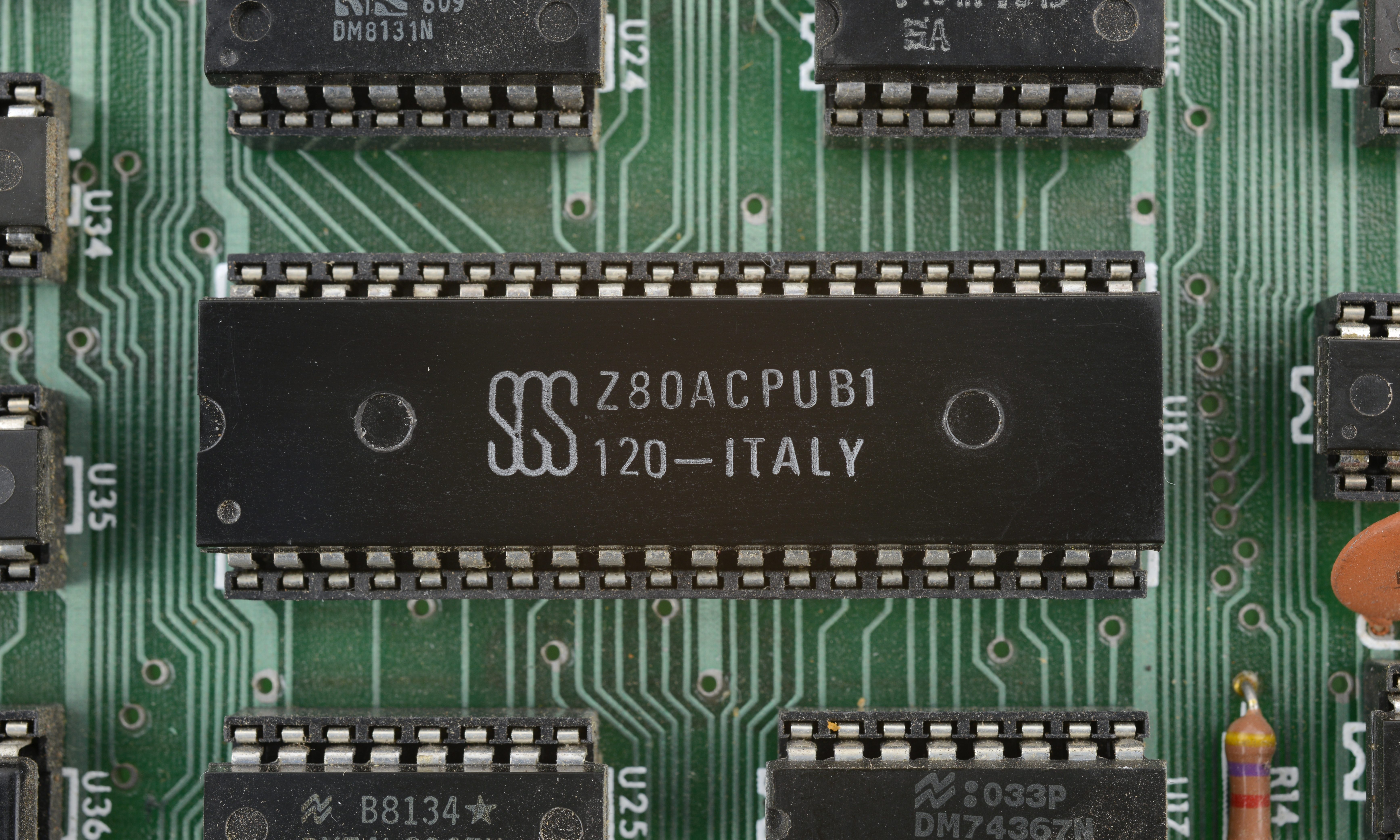
1976: Apple I Emerges
- Wozniak’s Apple I sold about 200 units as little more than a bare‐bones circuit board. The price ended up as $666.66, although the first 50 were sold for $500 each to raise cash.
- Fun Fact: The Apple I was funded, among other things, by Steve Jobs selling his car and Steve Wozniak selling his HP-65 calculator.
- The Apple I featured a four‑times‑faster cassette interface and integrated rudimentary video output for the first time. The days of the “blinkenlights” systems were numbered.
- As would be typical of Apple in the days to come, the tech wowed those who saw it at the Homebrew Computer Club, resulting in an order for 50 machines.
1977: Floppy Disks & Consumer Computers
- Floppy disk drives emerged, marking the beginning of the end for the cassette. They were initially expensive (close to $1,000) and didn’t hold much data. They were developed in the late 1960s (less than ten years before) by IBM for their products and used commercially by 1972.
- The Apple II, Commodore PET, and the TRS-80 all entered the personal computer market, bringing complete systems to the consumer market. Byte magazine called them the trinity of the early computers.

- Fun Fact: The TRS-80 is one of the first computers to arrive as a complete system, aimed primarily at the end user rather than the electronics-savvy hobbyist. The case isn’t even meant to be opened. Sound ominous, repairers? It was proposed as a kit, but the leading developer said, “Too many people can’t solder,” so it was released as a fully assembled system.
1978: Decline of Kits & Rise of Disk II
- The shift from hobbyist computers to personal computers as everyday tools continued. With the rise of I/O boards and more readily available memory boards, like those below, the S-100 systems thrived for a time in commercial and scientific applications.
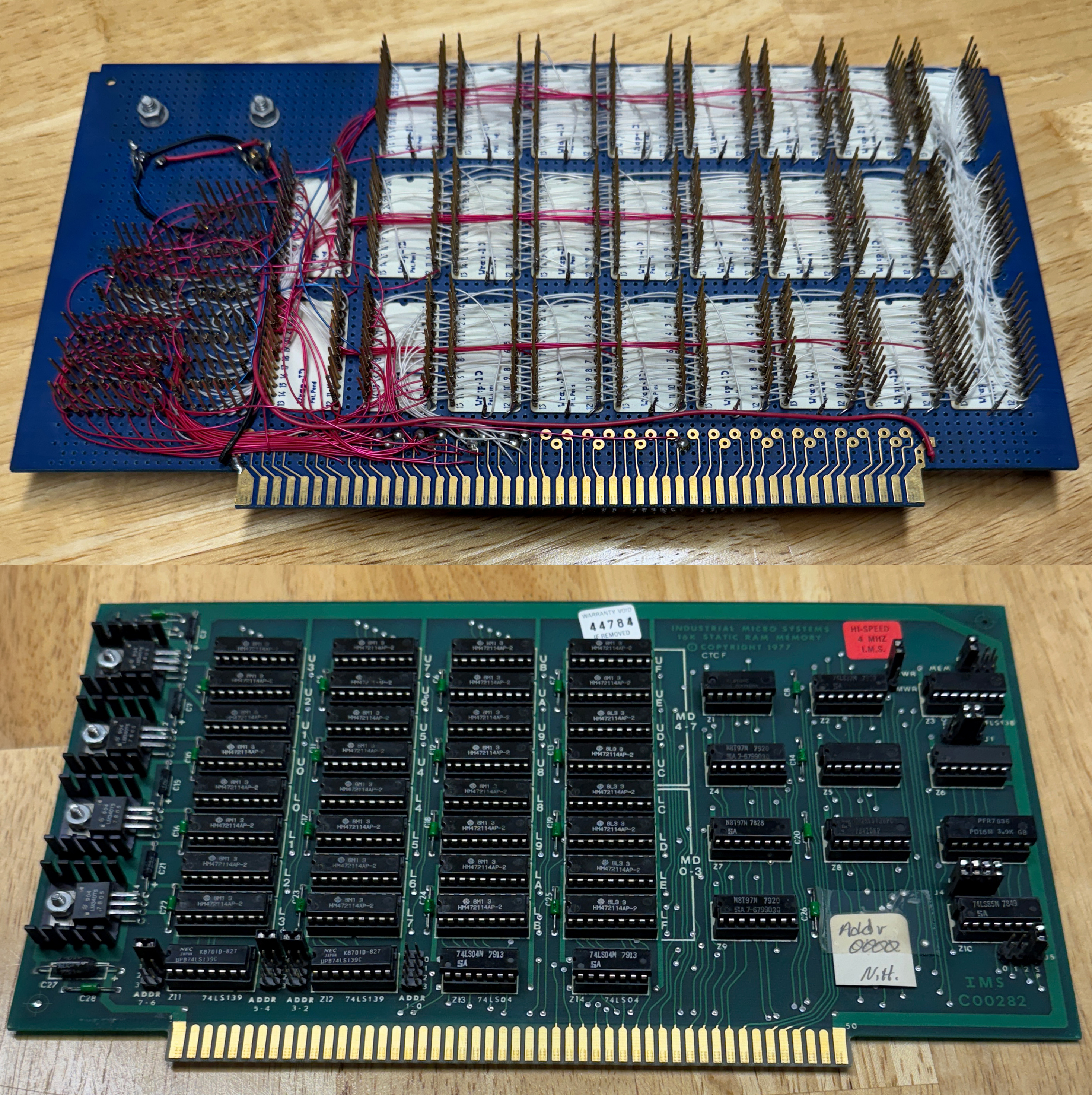
Tech Deep Dive. The boards shown to the left have a capacity of 48kB (the upper one) and 16kB (the lower one). These RAM boards use static RAM, which does not require refreshing the way dynamic RAM does. As long as it has power, it will hold onto data. In the early days, it was used for RAM because it was less prone to errors.
- The floppy disk was coming into its own, able to store between 160 and 360 KB. Apple brought the Apple Disk II to market for only $595 (later $495), which spelled the end of cassette use with Apple products.
- Fun Fact: Early floppy disks were single-sided, so only one side of the disk had data stored on it. DIYers learned to cut a window on the opposite side of the floppy jacket and double the capacity of the diskette. They were then called “flippy” disks because you had to flip them over to read the other side.
1979: Apple Comes on Strong and Software Helps
- The Apple II+ arrived on the scene. It was enhanced with 48K of memory. In only 5 years, memory had increased by an order of magnitude.
- Fun Fact: Amazingly, the Apple II computers could only handle uppercase letters at this point. The Apple II series continued in production for 15 years, with improvements along the way.
- The success of the VisiCalc business software package was big for Apple, as small businesses saw the value and bought Apple systems.
1980: Mass‑Market Personal Computers and the Hard Drive
- The Commodore VIC-20 comes to market. Technologically, it wasn’t revolutionary except for its color video output, but the price point was fantastic: $299, and a million sold. Computer gaming was on the rise, and Commodore was becoming a leader. Games like Pac-Man, DigDug, Donkey Kong, and Asteroids were among the titles for the VIC-20.
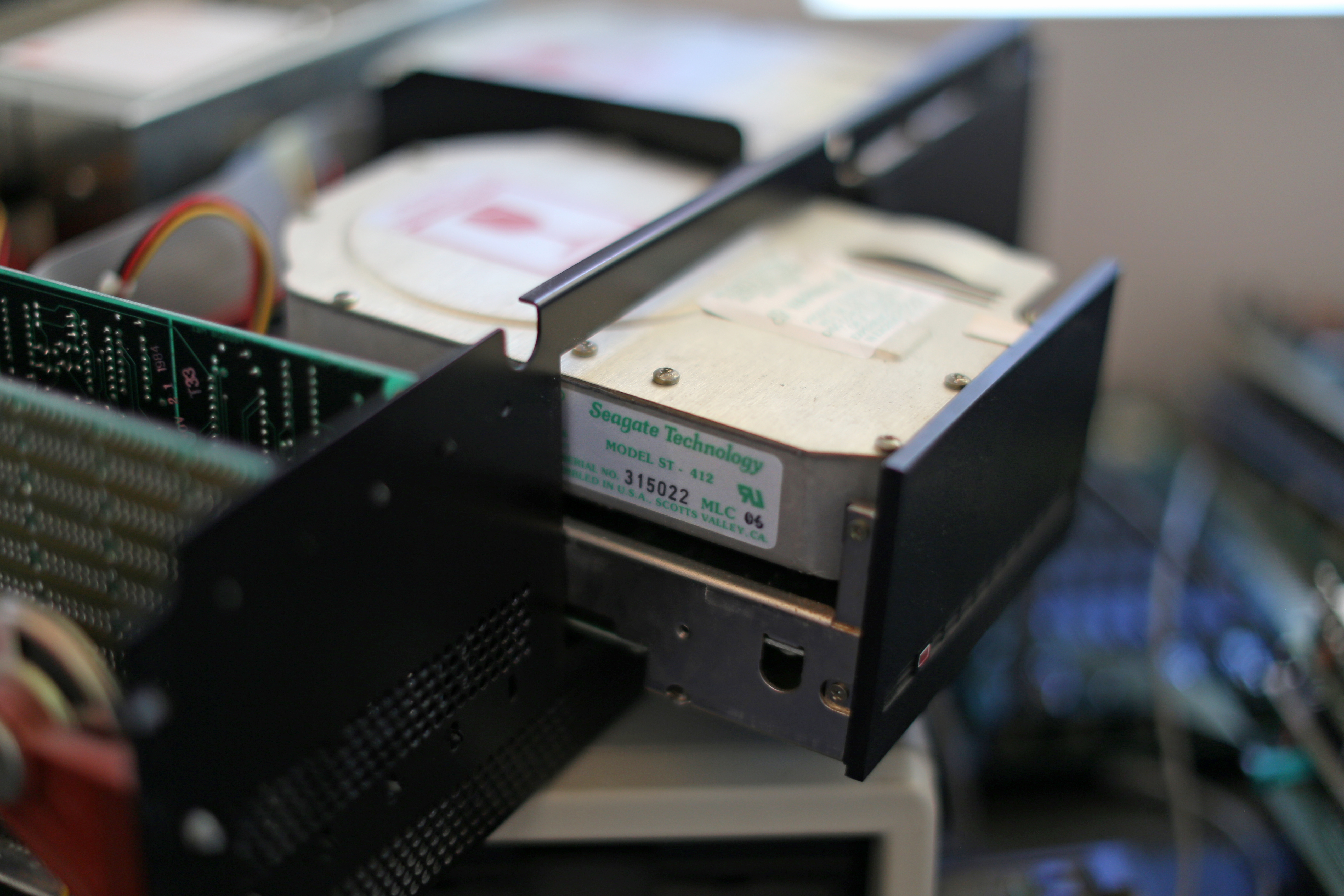
- Early hard disks also made their appearance. (Yes, this is a hard drive on an IBM PC.) The personal computer versions had capacities from 5-10 MB, and were hugely expensive, well over $1000; but by the early 80s, the cassette faded out.
- Fun Fact: Hard drives were also called “Winchester” disks. The name arose from the early IBM 3340 hard disk. That unit originally had two 30MB modules, which led to calling it a 30-30. And 30-30 became a namesake reference with the famous 30-30 Winchester rifle. So the drive was called a Winchester.
1981: IBM PC Standardizes the Industry (August)
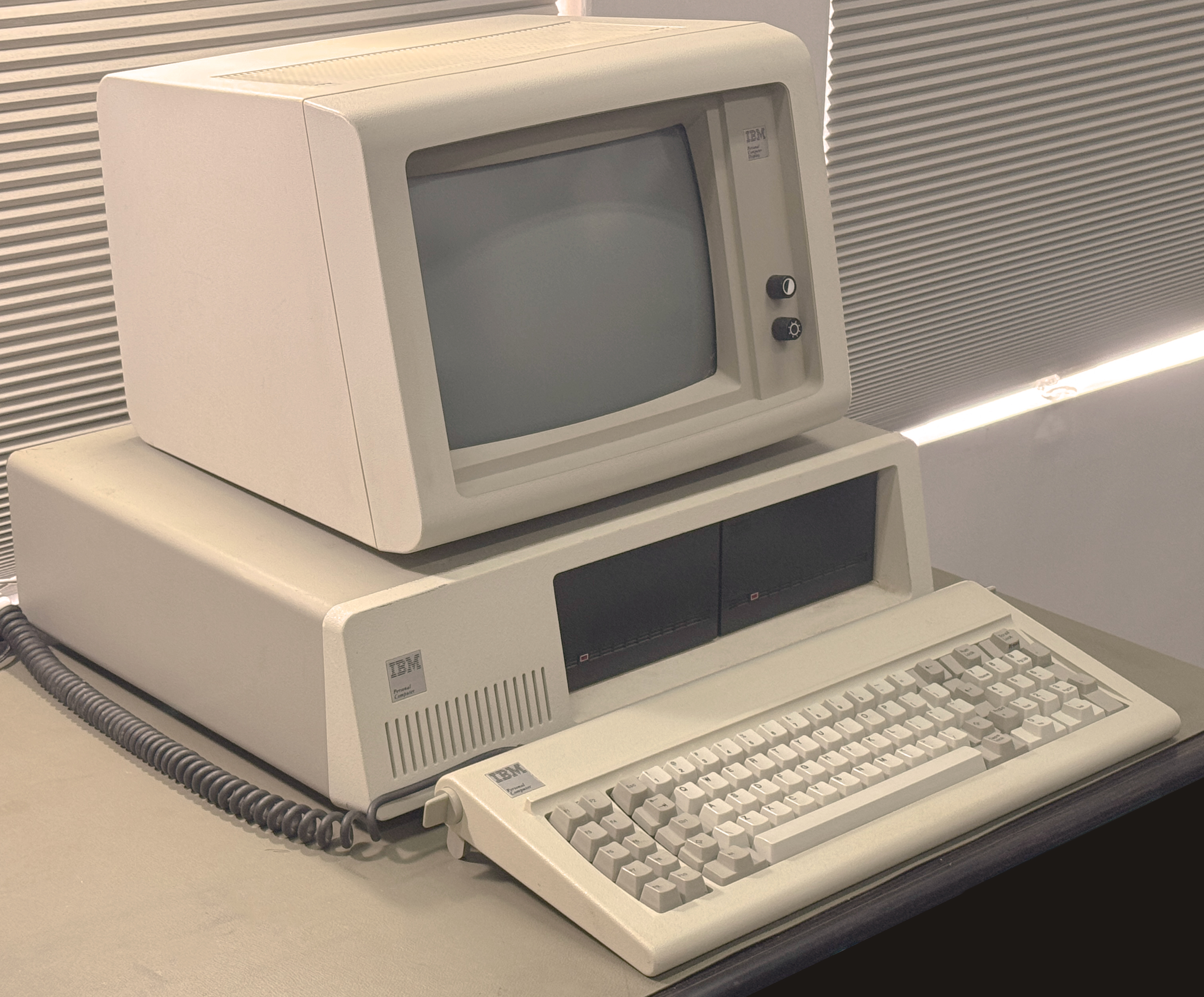
- The IBM-PC burst on the scene in August and was widely available by October, a game changer for the world of personal computers. The personal computer rapidly became known as the PC.
- Fun Fact: The IBM-PC was developed in 13 months! This is like lightning for a behemoth like IBM!
- Here was the start of the storm of clones and the foundation of the “Wintel” ecosystem.
- The senior editor of BYTE magazine, Gregg Williams, summed it up in the January 1982 issue:
“The genius of the people who designed the IBM microcomputer is that they managed to do everything conventionally but well—the IBM Personal Computer doesn’t have any startling innovations, but it also lacks the moderate-to-fatal design problems that have plagued other microcomputers.”
He went on to say,
“This microcomputer is as close as I’ve ever seen to being all things to everybody. IBM should be proud of the people who designed it.
1982: Games are Growing–The Commodore 64
- The Commodore 64 (C64) appeared and became the bestselling computer ever for a single model, with over 30 million units sold by 1993.
- The computer as a device for entertainment was a rising phenomenon, and the C64 excelled as a gaming device.
- Fun Fact: Even today, some 43 years later, there are software emulators for the C64 that are written to play classic games.
1983: Market Consolidation
- March: The IBM-PC/XT arrives on the market. It is an incremental step up from the original PC, mainly in increased base memory (128 KB), expandability (eight expansion slots versus five), and storage with a 10 MB hard drive available on several variants.
- Fun Fact: The IBM-PC/XT removed the cassette port present on the original IBM-PCs.
- The Apple IIe, the longest-running member of the Apple II family, arrived. Produced for an entire decade, it used tech from some less successful Apple systems.
- Kilobaud Microcomputing, a magazine aimed at the computer kit builder, ceased publication in 1983. It marks the demise of the computer hobbyist-kit world. Only 6 years from its inception!
1984: The Apple Macintosh
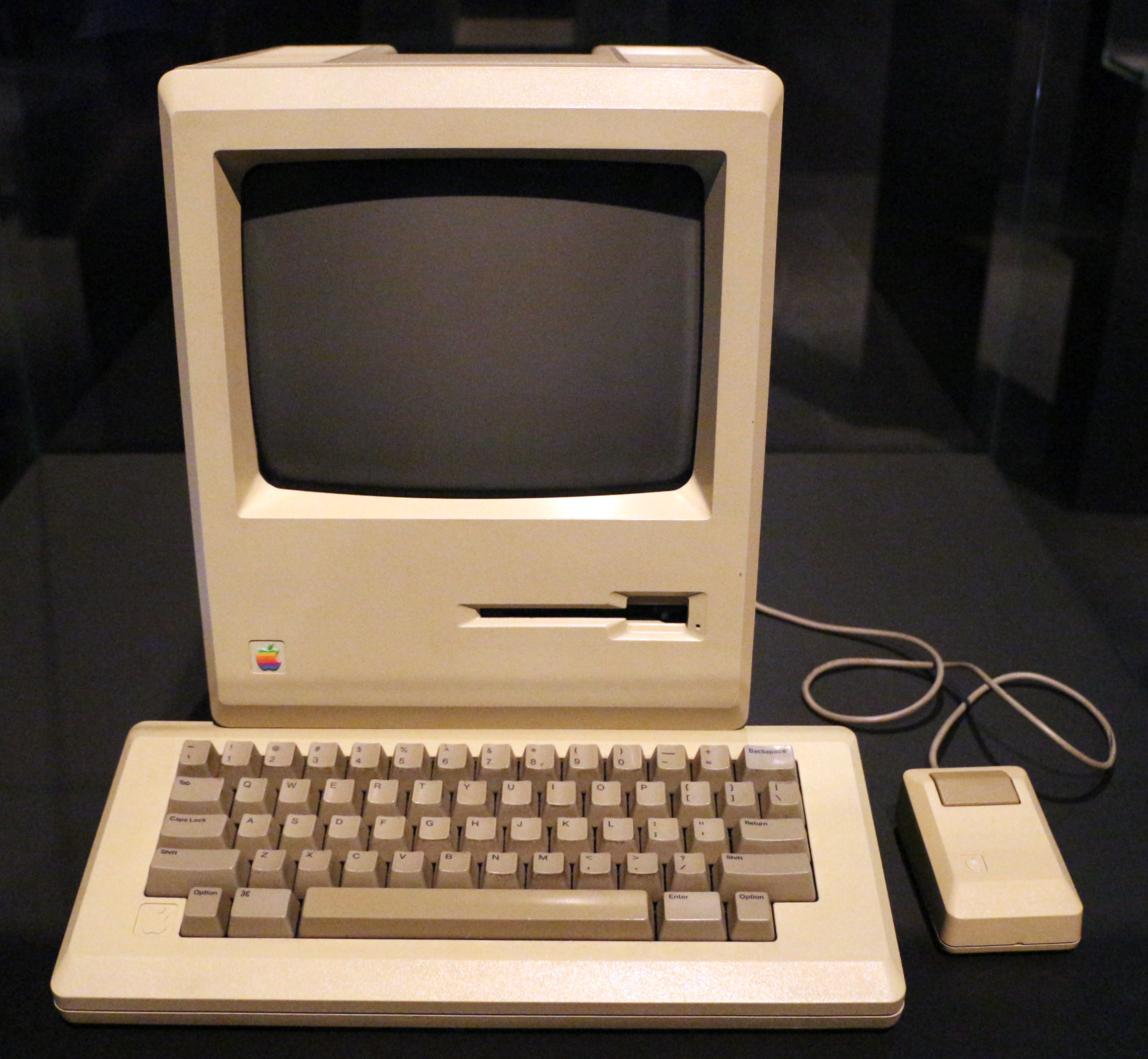
Sailko, CC BY 3.0, via Wikimedia Commons
- Rivaling the impact of the original IBM-PC, Apple unveiled the Macintosh in January 1984. With a price range of $1995 to $2495, Apple saw the Macintosh as a consumer-oriented device. The early Macintosh had only 128KB of RAM, a single 3.5” Sony floppy drive, and a very limited software suite. It was the computer for people who hated computers.
- The introduction of the mouse and the graphical user interface overshadowed these early software limitations. The terms desktop, folder, window, and icon enter our computer vocabulary.
- Fun Fact: Macintosh is a misspelling of the actual McIntosh apple variety. Obviously, the name stuck!
- BYTE magazine commented:
Overall, the Macintosh is a very important machine that, in my opinion, replaces the Lisa as the most important development in computers in the last five years. The Macintosh brings us one step closer to the ideal of computer as appliance.”
- Fun Fact: Steve Wozniak thought the Macintosh introduction ad planned for the 1984 Super Bowl broadcast was significant enough that he offered to personally pay for half of the cost of $800,000.
Quite a decade! From programming with strips of paper, switches, and lights, to a mouse with icons displayed on a built-in screen. The microcomputer became the PC.
The parallel to the development of aircraft is striking. The efforts of 1903, where a flight of a few hundred meters was significant, led to recognizable aircraft by 1913 that could fly across the Mediterranean Sea. The plane was still accessible to repair, and pilots routinely repaired their own machines after mishaps and flew them again, paralleling the situation with early computers.
The fantastic part is that today’s computer, an idea that is only 50 years old, is still amenable to repair by its owner. A personal aircraft has always been a dream, but it hasn’t been realized. The personal computer has.
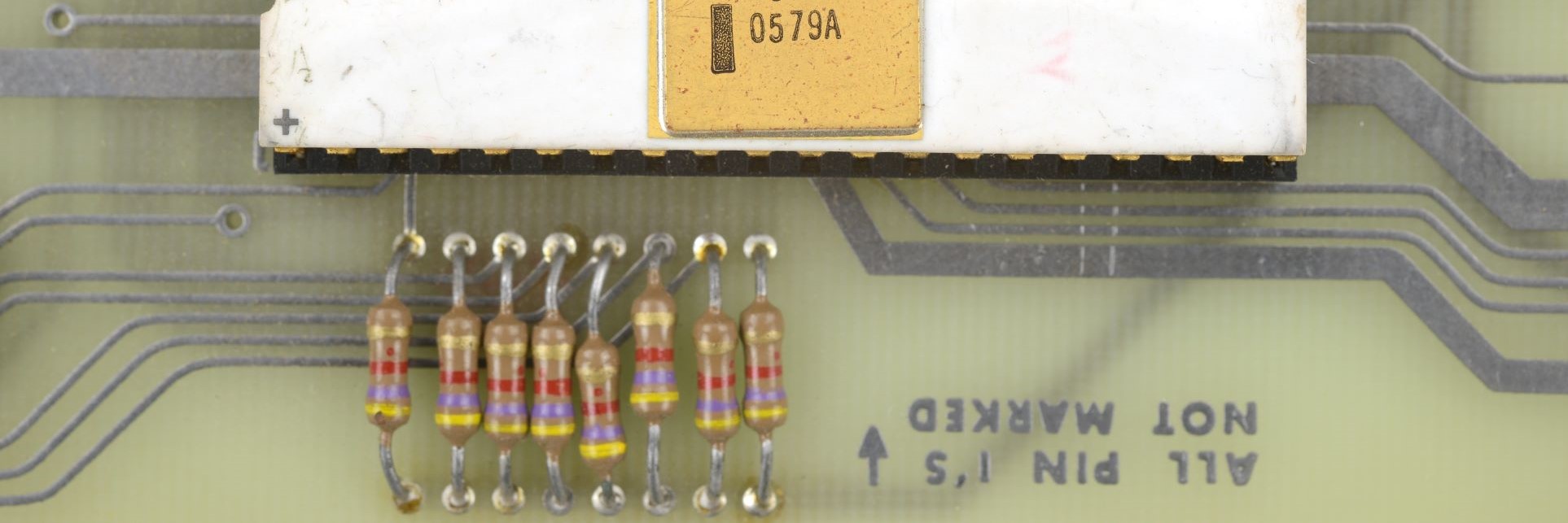




crwdns2944067:03crwdne2944067:0
Thank you! The topic remains interesting. :-)
Remarks:
1) Didn't refer "Personal Computer" originally to the opposite of a terminal of a central computer (mainframe or mini), rather than being a synonym for "Home Computer"?
2) Personal aircraft: to my knowledge, a few people in remote regions of the world do have them. However, the Jetsons-style flying vehicles haven't materialized. Imagine everybody rejoicing in "no oncoming traffic". Or in "no border control"...
Chris Laarman - crwdns2934203:0crwdne2934203:0
Fun fact about the IBM XT: some legacy of that one still exists on modern PCs, the slot cover. that tiny piece survived many standard upgrades since when the buses changed the cases didn't change and the other way round. there was no spot for a hard cut breaking that formfactor
masterX244 - crwdns2934203:0crwdne2934203:0
I bought s/n 397 from Altair, then an IMSAI, with a Z80. OK, I am showing my age.........
At some point I replaced 256 byte memory with four 1k memory boards - that was EXPANSION.
Starting out with paper tape programs, then designed and built an interface to a data cassette tape unit.
Then came CPM. I had to get into Assembly programming to modify that to work with my peripherals.
Eventually moving into an 8" floppy disk after designing and building the S-100 bus interface board.
Then DUAL double sided 8" floppies. I worked for a Shugart competitor, MFE. Our double sided drives actually worked.
Amazing history.............I actually have a couple of 4004s in the attic someplace. Things moved so fast, I never got around to using them.
bill - crwdns2934203:0crwdne2934203:0